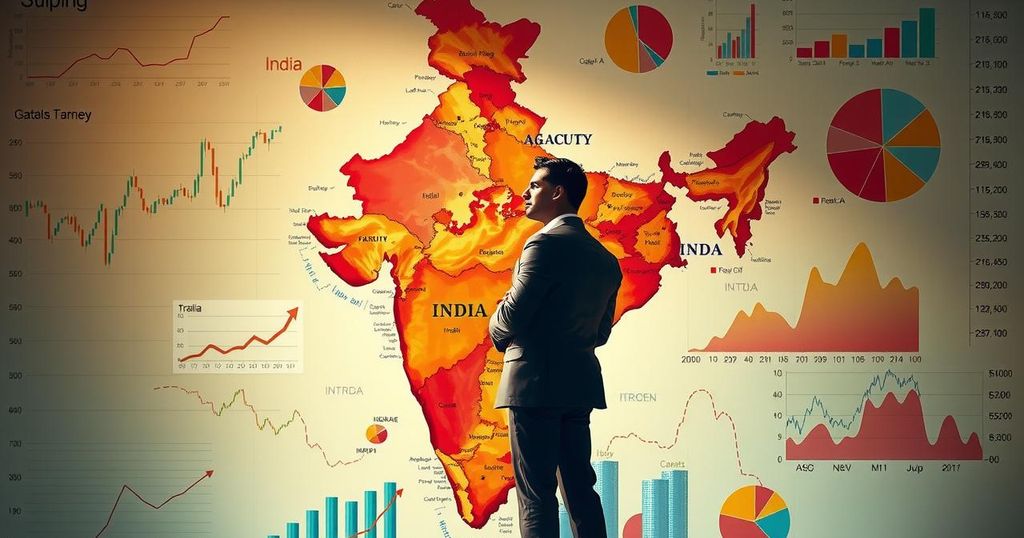President Trump has reiterated that India imposes high tariffs, stating that “you can’t sell anything in India.” He indicated that India is willing to cut tariffs, citing a broader unfair tariff structure between the U.S. and other nations. Despite this, trade volumes remain substantial, with a notable U.S. goods trade deficit with India in 2024.
On Friday, President Donald Trump reiterated concerns regarding India’s high tariffs, stating, “You can’t even sell anything in India.” He claimed that India has agreed to reduce these tariffs in light of growing international scrutiny. The President criticized the disparities in tariffs between the United States and other nations, describing them as “very unfair.” He particularly highlighted India’s auto tariffs, which he reported exceed 100%.
Throughout his presidency, Trump has consistently emphasized the issue of tariffs, asserting that many countries impose higher tariffs on U.S. goods than the U.S. does on theirs. In a recent speech to Congress, he cited countries such as the European Union, China, and India, illustrating the unfair tariff structure faced by U.S. exporters. Trump proposed that the U.S. will apply reciprocal tariffs in response to those charged by other countries, a concept he had previously reiterated during his campaign.
During a joint press conference with Indian Prime Minister Narendra Modi, Trump expressed understanding of the trade barriers imposed by India but emphasized the challenges they create for U.S. exporters. He stated that since taking office, he has enacted various tariffs against multiple nations, including duties of up to 25% on imports from Canada and Mexico.
Reports reveal that U.S. goods trade with India was valued at approximately USD 129.2 billion in 2024, with exports amounting to USD 41.8 billion. However, the U.S. goods trade deficit with India rose to USD 45.7 billion in the same year, marking a notable increase from the previous year.
In summary, President Trump’s remarks underscore his administration’s ongoing stance regarding international tariffs, particularly emphasizing India’s high tariff rates which he views as detrimental to U.S. exports. His administration’s strategy seems focused on negotiating lower tariffs globally, aiming to create a more favorable balance in trade. The figures illustrate a significant trade relationship between the U.S. and India, despite the existing trade deficit.
Original Source: www.ndtv.com




